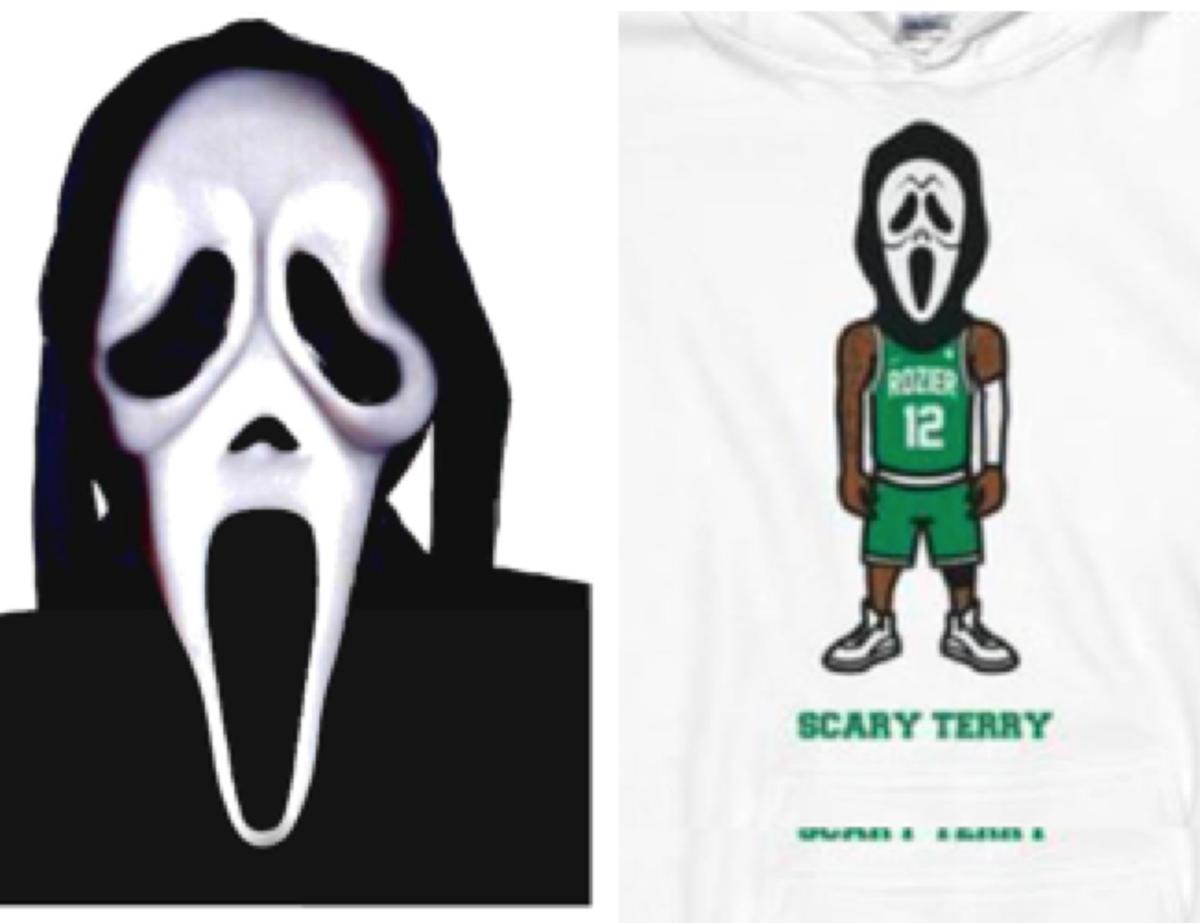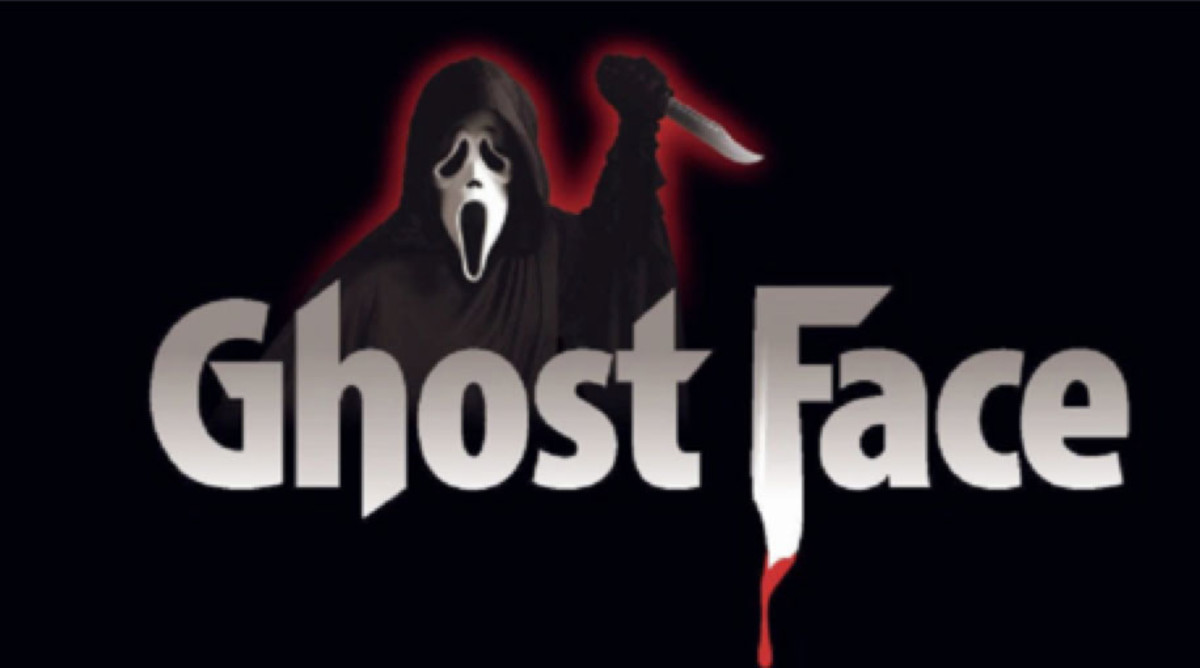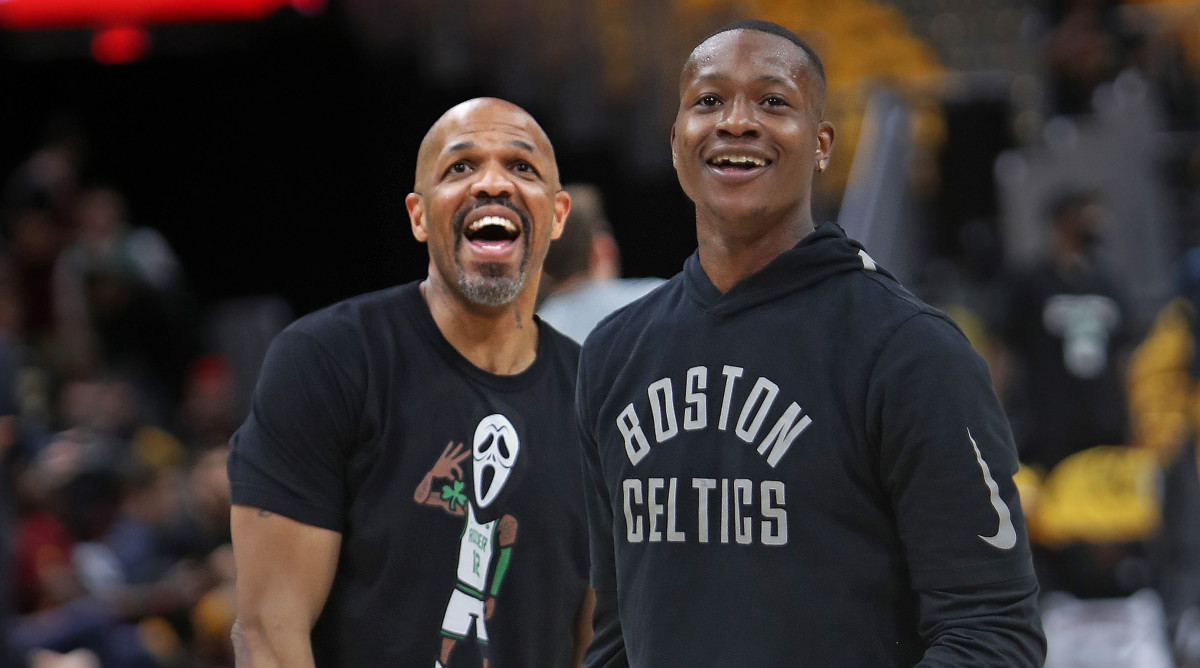Exploring 'Scary Terry' Rozier's Potential Defense Against Copyright Infringement Lawsuit

Last spring, Boston Celtics guard Terry Rozier became a folk hero in New England. The former Louisville standout played an instrumental role in the Celtics coming within one game of the 2018 NBA Finals. A bench player since the Celtics drafted him 16th overall in the 2015 NBA draft, Rozier replaced an injured Kyrie Irving in the starting lineup in January. He then, unexpectedly, morphed into a star. This was apparent as soon as his first start, when he lodged a triple double against the New York Knicks. Rozier, who stands 6’2", went on to average 16.5 points, 5.7 assists and 5.3 rebounds per game during the playoffs and excelled defensively.
Rozier also entertained Celtics fans off the court. After Bucks guard Eric Bledsoe dismissed Rozier as a no-name player, Rozier and retired Patriots quarterback Drew Bledsoe teamed up to mock the Bucks guard. Rozier even began to wear Bledsoe’s No. 11 Patriots jersey to playoff games.
NBA Debate: Ranking the 30 Greatest Jerseys of All Time
Topping it all was Rozier adopting the “Scary Terry” alter ego and then pairing it with a mascot design that blended his own image with that of a well-known movie character. Specifically, a cartoon depiction of Rozier wearing a Celtics jersey would feature a variation of the mask worn by the “Ghost Face” killer from the hit 1996 slasher film "Scream". The Ghost Face mask itself, of course, is not entirely original. Its design is inspired by Edvard Munch’s famous “The Scream” painting, hence the naming of the film “Scream”.
Still, the similarity between Rozier’s Scary Terry and Ghost Face was obvious and intentional:

When asked by GQ’s Clay Skipper about the origins of his newfound identity, Rozier explained that people had begun to call him “Scary Terry” following his game-winning steal and dunk in a game against the Pacers in December 2017. Rozier enjoyed fans calling him Scary Terry since "Scream" is his favorite horror movie and since he finds Ghost Face particularly creepy—he even had the image tattooed on his arm during the summer of 2017.
“Scary Terry” is also a familiar expression to those who watch Adult Swim’s network’s animated sitcom “Rick and Morty.” The show features a villainous character named Scary Terry. Rozier, however, told Adam Himmelsbach of The Boston Globe he doesn’t like Rick and Morty, so that reference isn’t especially meaningful to him. He instead focuses on Scary Terry’s association to "Scream", and how that film—which starred Neve Campbell, Courtney Cox, David Arquette and Drew Barrymore and is considered by some to be the best horror film of the '90s—represented a superior era of horror films than are being produced today.
Rozier’s bond to Scary Terry soon became commercialized. One of Rozier’s marketing representatives sent him a shirt with a cartoon image of Rozier wearing a hockey mask worn by the Jason Voorhees character from the "Friday the 13th" film series. Rozier liked it but suggested that the Jason mask be replaced by the Ghost Face mask. The mass-murderer-mask swap was then made.
As Rozier became more known to fans last spring, he and his representatives sold Scary Terry t-shirts and sweatshirts. They used a handful of major vendors, including Barstool Sports, Amazon and Etsy. As early as February, Rozier aggressively promoted sales of his clothing line on Instagram and Twitter. It’s unclear how many Scary Terry apparel items have been sold, but an initial batch of 500 sweatshirts and T-shirts quickly sold out.
Not everyone has embraced Rozier’s newfound identity. Easter Unlimited, a New York corporation that does business as Fun World, has sued Rozier for copyright infringement, trademark infringement, counterfeiting and dilution by blurring.
Fun World is in the business of designing, manufacturing and marketing products for Halloween and other holidays. It owns the relevant intellectual property of the Ghost Face mask. Fun World permitted the companies that produced "Scream", along with the movie’s sequels and accompanying TV series, through contractual licenses.
Yet neither Rozier nor his representatives contacted Fun World about purchasing a license for his Scary Terry apparel. Fun World insists that Rozier owes up to $150,000 for each act of infringement, plus other damages and attorneys’ fees. Potential damages are in the millions of dollars. Fun World also demands that a permanent injunction be ordered against Rozier to prevent him from further commercializing Scary Terry.
Fun World’s complaint was recently filed in the U.S. District Court for the Eastern District of New York. Judge Joseph Bianco will preside over the litigation.
Understanding the legal claims
The first type of claim in Fun World’s complaint is copyright infringement. A copyright refers to the exclusive right to reproduce, publish or sell an original work of authorship. A design for a Halloween mask is one of many kinds of material expressions that exists in tangible form and can be copyrighted. An effective claim for copyright infringement arises when the plaintiff possesses a valid copyright and it has been reproduced without authorization. As revealed in exhibits submitted by Fun World’s attorney, Craig Sanders, Fun World obtained from the U.S. Copyright Office registrations for a “ghost mask with shroud” sculpture back in 1993 and 1999. Since a copyright generally lasts the life of the author plus an additional 70 years, Fun World’s copyright protection remains in 2018.
The second type of claim is trademark infringement. A trademark consists of a word, phrase, symbol or design that distinguishes a product from others. A valid claim for trademark infringement can be pursued when there has been an unauthorized commercial use of the same or substantially similar mark and it is done in a way that is likely to cause consumer confusion about the source of the product.
In 2010, Fun World received from the U.S. Patent and Trademark Office registration for the following mark:

As described in the registration, this mark “consists of a stylized representation of a ghost outlined in a red with a white face, black eyes, nose and mouth, a black cloak and holding a black and gray knife in its left hand. The stylized wording ‘ghost face’ appears in shades of gray to white below the ghost design with a red drop hanging off the letter ‘F’ in ‘Face’. The black rectangle represents background only and is not part of the mark.” The mark is registered for several goods, including for t-shirts, costume masks and party items. Fun World asserts that Rozier’s Scary Terry clothing line will confuse consumers as to whether the clothing reflects “authentic garments” manufactured by Fun World.
PRINCE: Sefolosha Connects with Racial Profiling Victim
Fun World also contends that Rozier engaged in trademark counterfeiting. By allegedly using a very similar design to Ghost Face, Rozier is accused of trying to dupe consumers into believing that they are buying goods legitimately associated with Fun World. To that end, Fun World contends that Rozier maliciously and willfully relied on Fun World’s past advertising and promotion of Ghost Face in order to make a profit for himself. Stated differently, the Scary Terry t-shirts and sweatshirts sold in part because consumers were already familiar with the Ghost Face design. The sales were not entirely about Rozier’s surprisingly superb play.
Lastly, Fun World charges that Rozier diluted the company’s trademark in the Ghost Face mark. Rozier is accused of “blurring” the distinctiveness of the mark since consumers might no longer regard Ghost Face as a unique mark of Fun World. Instead, they might associate it with Rozier.

Understanding Rozier’s likely defenses
In the coming weeks, attorneys for Rozier will answer Fun World’s complaint. The attorneys will deny Fun World’s assertions and offer a series of defenses.
As a starting point, some of the traditional defenses to copyright and trademark claims are unavailable to Rozier. He cannot credibly claim that the similarity in design was an accident or mere coincidence. Rozier has enthusiastically told media about his love of "Scream" and his admiration for the design of the mask worn in the movie. Rozier also never obtained a license from Ghost Face, so he can’t claim that he had permission. Further, the Ghost Face mask is not in the public domain. Fun World has obtained appropriate registrations from the federal government.
Rozier, however, could raise other arguments. For one, he could insist that his variation of Ghost Face falls within the boundaries of “fair use.” Fair use is a legal defense where the defendant contends that he or she lawfully used another’s intellectual property despite lacking consent to do so. Fair use is recognized for certain types of usages, including for news reporting, scholarly criticism, research, teaching and parody. In assessing whether fair use is appropriate, courts weigh such factors as whether the usage was for nonprofit educational purposes or for profit, whether the usage was extensive or limited and whether the usage significantly impacted the value of the copyrighted work.
WOO: Nassir Little, North Carolina and the Challenge of Scouting
Rozier could assert that his use of Ghost Face reflected a form of parody. He could argue that Scary Terry was clearly a cartoon figure of himself, and that it reflected fans and teammates chiding him for his love the movie "Scream". To bolster that point, Rozier could highlight that while Scary Terry is very similar to Ghost Face, there are differences that confirm the Scary Terry design exaggerated Ghost Face for comedic effect. For one, the structure of the hood and the assignment of colors are somewhat different. For another, the fact that the mask is placed on a cartoon depiction of a Celtics player instead of on a menacing apparition underscores the comedic quality of Scary Terry.
Fun World would categorically reject a fair use defense. The company would insist that Rozier isn’t satirizing or lampooning Ghost Face but rather replicating it. Fun World would also stress that Rozier used Ghost Face not to promote education or share news, but instead to help him sell t-shirts and other apparel.
Other legal defenses could prove more effective for Rozier. Alexandra Roberts, a trademarks law professor at the University of New Hampshire School of Law who has written extensively on sports trademark litigation, shared insight with SI.com as to how the trademark aspects of the litigation could play out. For one, she finds the scope of Fun World’s design as potentially advantaging Rozier. This is in light of the extent to which Rozier’s Scary Terry design revolves around a cartoon depiction. “Unfortunately for Fun World,” Roberts observes, “its trademark registrations are for a design that includes not only the ghost’s face, but also its hood, shoulders, arm, and knife, above the words ‘ghost face’— the portion that Rozier used accounts for less than 5% of the overall design.”
BEACOATS: Give Women a Chance: Inclusion in the NBA
Further, Roberts emphasizes that while the phrase “ghost face” is registered for t-shirts, the design mark of ghost face is only registered for things like masks, party supplies, and figurines. “The limited scope of those registrations may doom Fun World’s claims of trademark infringement, counterfeiting, and dilution,” Roberts argues. She also notes that the trademark claims might be weakened by the public’s lack of familiarity with Fun House. “To sustain a cause of action for dilution,” Roberts observes, “Fun World would need to establish nationwide fame—it would have to demonstrate that its mark is famous among the general consuming public of the United States as a source indicator for goods.” Further, Roberts notes that the popularity of the Ghost Face mask might not be closely connected to the public’s awareness of Fun World: “The mask’s appearance is precisely what makes it useful to consumers . . . people would buy the mark because they want to wear the ghost face over their own, not because the ghost face indicates a brand. If Fun World’s trademark use is limited to use of the registered logo and phrase, it may have a hard time proving that consumers understand the ghost face in isolation, separate from the logo, as a source indicator.”
Still, Roberts is by no means prepared to write off Fun World’s lawsuit. If the company can establish that Rozier’s use of the Ghost Face on his “Scary Terry” merchandise creates a likelihood of consumer confusion, Rozier could be enjoined from continuing to use Ghost Face. Roberts warns Rozier that recent case law could be problematic for him. “Given the recent success of Viacom in preventing an aspiring restaurateur from using ‘Krusty Krab’ as the name of his restaurant based on a likelihood of confusion with the fictional fast-food joint in Spongebob Squarepants, a jury could well find that consumers simply expect anything bearing the ghost face to have an official connection with the ‘Scream’ franchise.”
How Rozier’s early struggles could impact a settlement
At any time, Rozier and Fun World could negotiate a straightforward settlement to end the litigation. Rozier could agree to pay Fun World a portion of what he has earned thus far on Scary Terry sales and also promise to pay Fun World a percentage of any sales going forward. In exchange, Fun World would drop the lawsuit and extend a limited license to Rozier to use its intellectual property.
However, Fun World might question the value of Scary Terry sales going forward. If the company adopts such a perspective, it could lead it to become skeptical as to how much value it would net should Rozier agree to pay them a percentage of sales going forward. It is fair to say that Rozier’s popularity in Boston has waned. Irving has returned to starting lineup and Rozier has returned to the bench. The core identity of the ’18-’19 Celtics largely revolves around three players: Irving, Jayson Tatum and Al Horford. For his part, Rozier seems—to borrow a page from the movie industry—less a co-star and more a character actor.
SHARP: LeBron and the Lakers Have Lots of Work to Do
Along those lines and like many of his current Celtics teammates, Rozier has struggled thus far in ’18-’19. His shooting percentage has dropped from last season and he has not distributed the ball as effectively.
As an added complication, Rozier is set to become a free agent next summer and he has sent mixed signals to Boston fans about his desire to remain in green. Though Rozier has usually “said the right things” about wanting to win in Boston, he has also liked and then un-liked a recent tweet about teams that should consider trading for him. He has also offered cryptic tweets that could be read as criticisms of the Celtics and expressed that he wants to keep his options open in free agency. Whatever his intentions, Rozier’s ability to land a lucrative free agent contract next summer has been hampered by head coach Brad Stevens reducing his minutes and by Rozier’s own lackluster play.
But Rozier’s market power—and the marketability of his Scary Terry alter ego—could always return to prominence. He might rediscover his magic from the 2018 playoffs and resume his terror on opposing teams. That might not be with the Celtics, though, so a Scary Terry 2.0 could be in order. In the meantime, he and Fun World will have need to litigate their dispute.
Michael McCann is SI’s legal analyst. He is also Associate Dean of the University of New Hampshire School of Law and editor and co-author of The Oxford Handbook of American Sports Law and Court Justice: The Inside Story of My Battle Against the NCAA.
